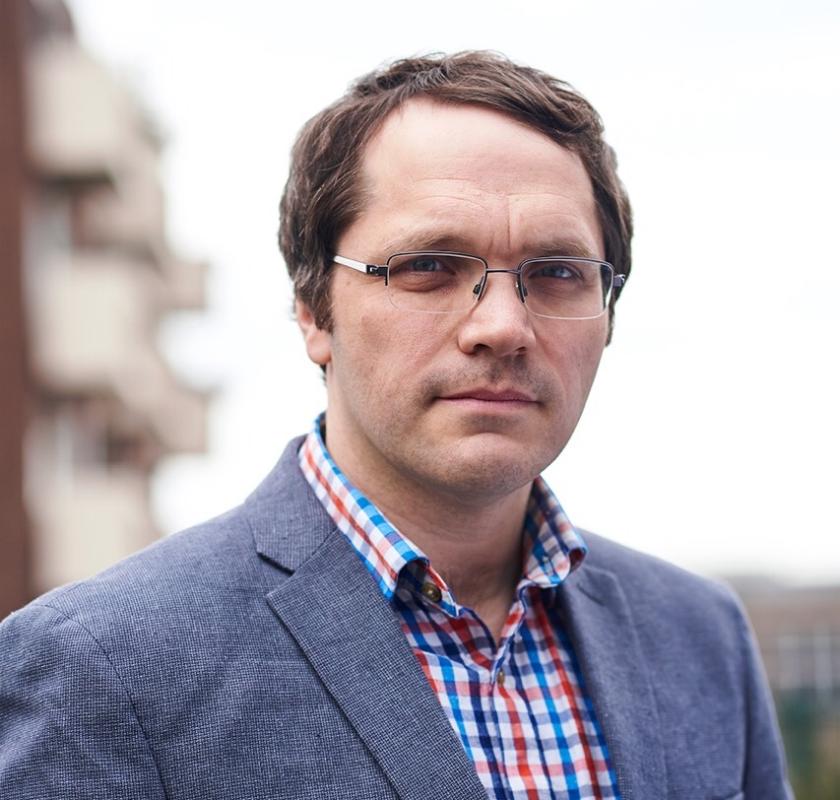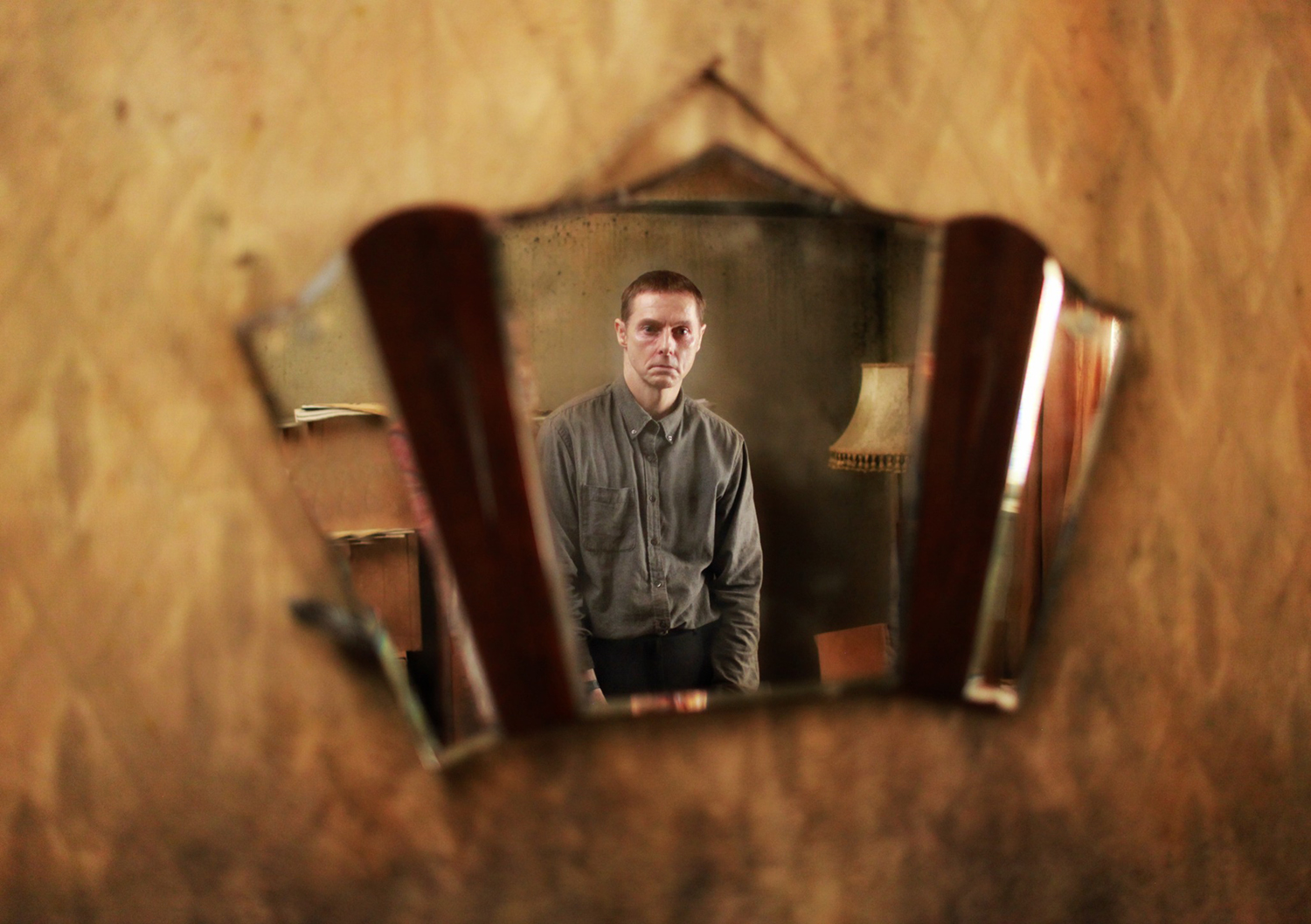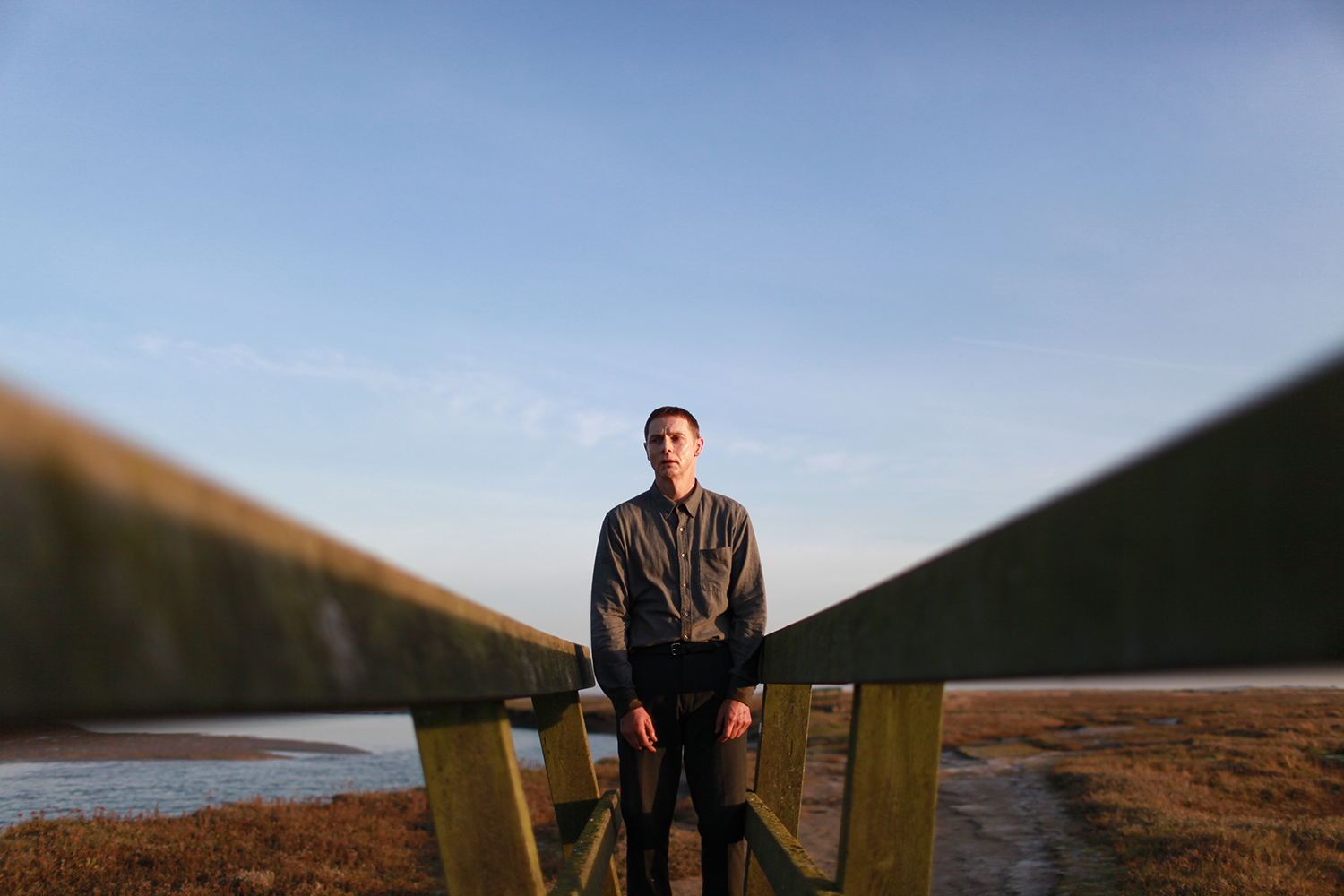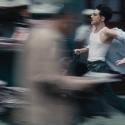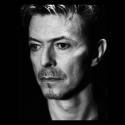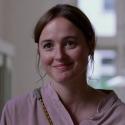Watching Matthew Holness’ debut feature Possum, you’d be forgiven in thinking he was a tortured soul. Lead character Phillip (played by Sean Harris, pictured below) is a lean marionette of a man, prone to horrific flights of fantasy involving a human-headed spider puppet. Nauseating sequences are punctuated by the unmistakable drones of the BBC Radiophonic Workshop, while the significance of a local kidnapping begins to seep into Phillip’s life.
In person, whatever dark shades Matthew Holness has are well hidden. As charming as he is self-effacing, he speaks passionately about crafting a film that’s been a long time coming. Holness was a Cambridge Footlights contemporary of David Mitchell, Robert Webb and Richard Ayoade, and built a cult following for his late-night Channel 4 horror-parody Garth Marenghi’s Darkplace. But despite minor roles in comedies like The Office and Friday Night Dinner, he has mostly shunned the spotlight.
After honing his craft with a series of short films, his first feature is based on one of his short stories. Gone are the knowing winks of Darkplace; Possum is a deathly serious look at the fragility of the human mind. Owen Richards spoke with Matthew ahead of the films release to find out what drew him into create one of the most disturbing (if not impressive) experiences of modern cinema.
OWEN RICHARDS: When creating a film like Possum, what comes first? Is it the concept, story, visuals…?
MATTHEW HOLNESS: The character came first. It was always important to get an actor who could inhabit Philip. He is such a troubled character that I needed an actor who could go to those emotional depths.
That was the most important element, I knew I could figure out the visuals at a later point, but the biggest anxiety for me was: is there someone who can, and wants to, play this part. We were very fortunate that Sean Harris came on at an early stage and really wanted to play the part of Philip. He had the absolute emotional range to do it.
Once Sean Harris was on board, how much did you work with him on creating that character?
It was collaborative. We would meet up and talk a lot about Philip, about his past. Sean wasn’t interested in it being a genre film or a horror film, the only thing he was concerned with was being truthful to Philip and his story.
That was a really useful starting point because it meant that we knew that it was all about the emotion of it, and giving someone who can’t speak a voice. It was a lot of discussion and a lot of talking, just deciding what’s happened to Philip, where has he been, how does he feel, what is he frightened of?
How much did you work with him on the performance? His physicality is very striking and very different from how usually I imagine a Sean Harris character to look.
Those were really things that he brought to it. I was prepared to let him lead on the performance. He was interpreting the script along the lines of puppet imagery, and all those things were coming out. We would talk between takes and discuss whether certain things were the right direction, but really with someone like Sean you leave them to do their thing.
I’ve got a background with comedians, and with comedians it’s very different. Most of them will muck up a take on frequent occasions, and there’s all manner of continuity issues like people forgetting to pick up a thing on a certain line. It’s just completely different when you’ve got proper actors who are well trained and know what they’re doing. You kind of learn to let them do their thing.
How different was creating your first feature film from a TV series?
Different in some ways, and not in others. I’d done a short TV film for Sky called The Snipist, so that was a good bridging gap between doing short films and doing a longer feature. The biggest jump up is in working with proper actors, and that is a different discipline. I learned fairly quickly that I didn’t need to do too many takes with Sean because he usually nailed it straight away.
I was shooting on film again, which I’ve shot on before. I always think it’s a good discipline to have limitations like that; you can only do a certain number of takes, you can’t just keep filming and filming. I’ve always storyboarded, I didn’t storyboard as much on this feature as I would’ve liked. I came straight out of filming a short film for Sky called Smutch, so there wasn’t as much preparation time sadly.
But that was quite interesting, because that was a big learning curve as well – being able to create shots on the day with actors that are changing. Sean is a method actor so we would work out some of the movements on the day which was a new experience. Very different in some ways, and reassuringly similar in other ways.
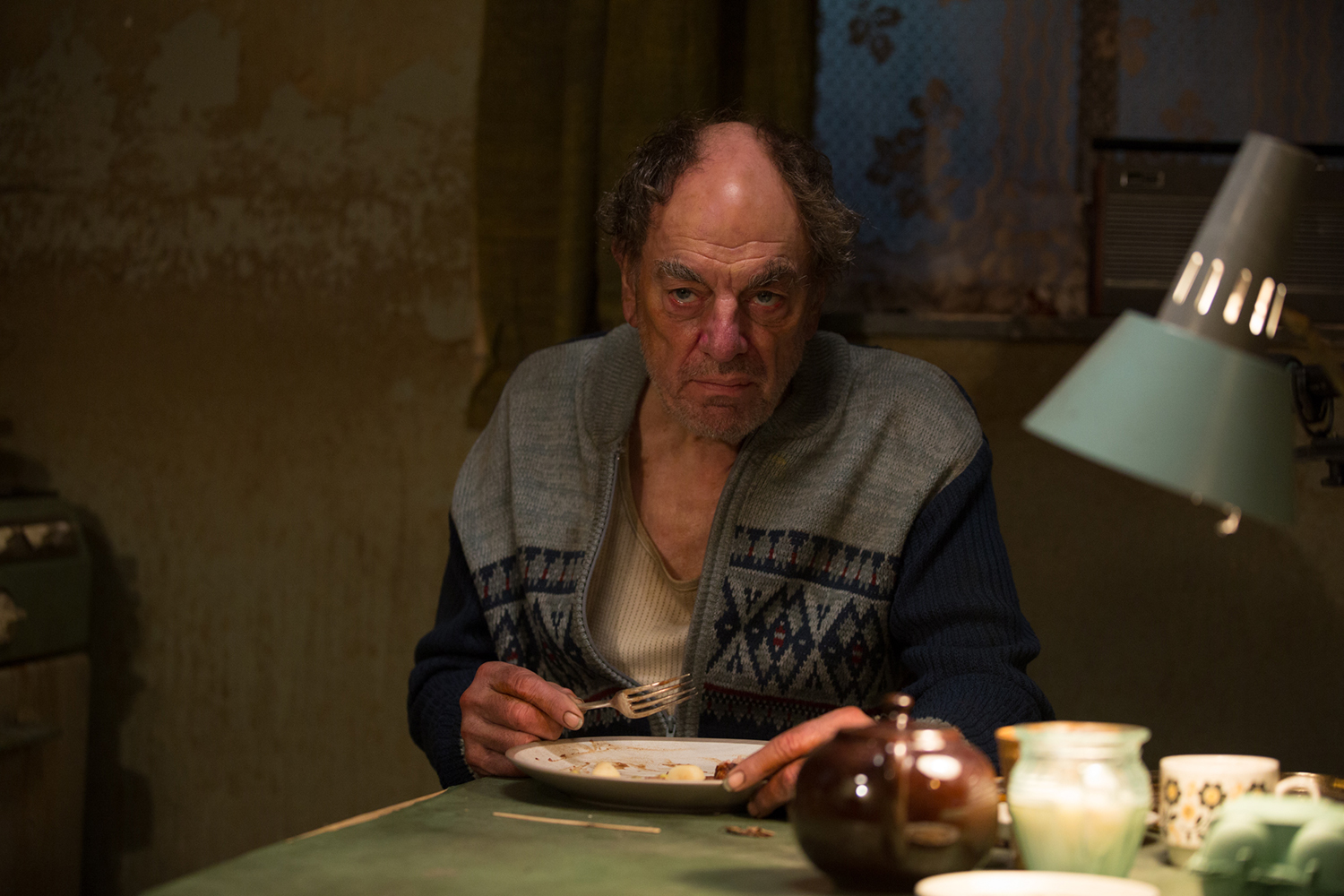
You mention Sean being a method actor - the feel of the film is very uncomfortable at times, was the set like that between takes?
It was a very tense set, yeah. It was important at all stages that this was a subject we didn’t ever want to take lightly. We didn’t want it to be an excuse to make an exploitation horror about a subject like this.
Sean was very insistent on that, we had to approach it in a way that was respectful of the subject matter and the experiences that people watching this may well have gone through themselves. It was right to have that feel for it. But it was intense, Sean and Alun Armstrong (who plays Maurice, pictured above) didn’t interact off screen, they were kept apart so that their characters would keep apart. What you get on screen is very much that tension that a performance from actors like that generates.
Were there any films or directors in particular you were looking at, in terms of visuals or storytelling, ahead of filming?
Possum really came out of a story I’d written, but also the desire to make a modern silent horror film. I’d watched a lot of German expressionist horror films from the Twenties and Thirties, and I love them because so many were really about the experience of the Great War. You had these tortured characters that were expressing themselves visually, they weren’t talking; it was all in the physicality of the film.
I had a story that was about this character that was unable to voice what he’d gone through – unable to vocalise it or communicate it. I thought this is someone who would not talk to anyone, who would reject the viewer, reject me, reject everyone, because they’d gone through someone they can’t express. That suddenly became interesting, this felt like a story that you could tell in a way that those silent horror films were told.
I guess another big influence on it was George A. Romero’s Martin, which was again a film that’s about a very intense family relationship with lots going on under the surface – a kind of gothic drama that’s taking place in a very suburban setting. And in a very similar way, the films of Pete Walker like Frightmare, where you’ve got these very intense, destructive family relationships taking place behind closed doors and shuttered windows. I felt that was the kind of thing I wanted to get. The real horror that are taking place in houses in every street in every town in the UK.
Visually the film looks unmistakably British, with the green and brown palette – was that intentional?
Yes, first and foremost it’s about a character revisiting their childhood, and Philip’s childhood was the late Sixties and into the Seventies. That’s when what happened to him happened, and psychologically speaking still in that space. He hasn’t moved on, and he’s stuck there. It was important to create a sense that his world is there – the world of that period and his experiences had to be reflected in the look of the film.
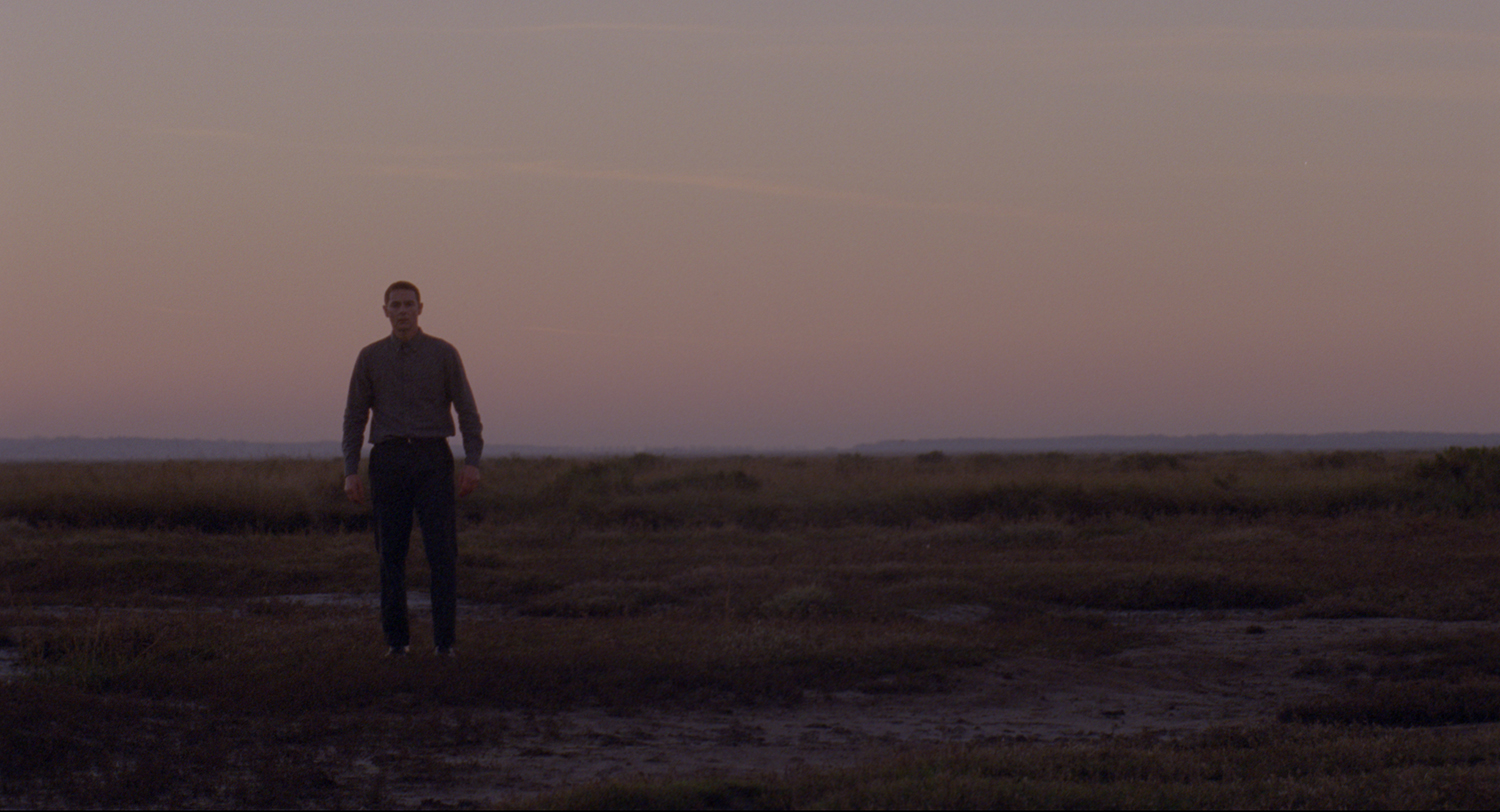
I wanted to capture the sense of those public information films that were all over the TV when I grew up. I was trying to get a visual sense of those films, to kind of tap into people’s memories of the fears and the dangers that we were warned about as children.
Interestingly, so many of those films read differently because the monsters of our time were fronting a lot of them, narrating them. We’re still processing that the very people that would warn us of these adult dangers and threats, were the people that were presenting them. That’s an odd and very strange reality that the film is partly about. It was a conscious decision to try and reflect those public information films in the mood and atmosphere.
That’s also why the Radiophonic Workshop are such an integral part of it because they are the soundscape of that period, and the strange atmosphere of the music that they create is very much part of that territory and past. That was all part of making it feel like we are in someone’s head that still hasn’t left that part of their life behind.
What was it like getting the BBC Radiophonic Workshop involved?
Incredible! I didn’t think they would, it was a real surprise to me. I’d used a couple of their pieces on our rough assembly edit when we were piecing it together and using temporary music tracks, and theirs were the music tracks that really worked. They were Delia Derbyshire tracks, some from Doctor Who, and they worked so well I wanted to license them.
I asked our musical supervisor Phil Canning if we could license those tracks, and he said well actually Radiophonic Workshop are signed to Warp Records and are looking to score a feature film, shall I try to get you in a meeting? I couldn’t believe it, I thought “Yes please, that would be good!” I honestly didn’t think it would ever happen, but they watched the film, I think they liked the fact I’d chosen their music for the temporary assembly, and they decided that it was something they would really like to score fully. They then went to score it, and it’s an absolute miracle. It just works so well from a creative point of view, it’s a perfect fit and they’ve done an absolutely wonderful job.
A lot of the tension in the film comes from the edit and the sound design, how much came out in the post-production?
I think a lot does, a lot always comes out. One of the odd things about editing is that you can put music against stuff, and suddenly you’ve got a completely different mood. Things can work with pieces of music that you just discover when you’re editing things together. I think a lot of the fun in editing something like this is you can chop it all up.
When we showed the BFI our first cut, they said: “We really like how this is going, feel free to be more experimental. Play around with the narrative, cut it up more, play with those aspects,” so we were encouraged to be a bit bolder in that area. What’s really nice is the more we did that, the more it felt like we were getting Philip’s view of what’s happening to him. There wasn’t a logical reality that we had to follow, we could jump forward and backwards, as long as we kept true to what he was feeling and what he was fearing, we could play about a bit.
There are some ambiguities left in the film, do you have a clear idea in your head of what’s actually happening?
I do, and actually during the development process I was always under a slight pressure to pin those down. My feeling on that is you don’t need to know what Philip’s done, and you don’t need to know where the police are and what they’re doing. There was a danger that the more you had the police involved and the more you concentrated on the disappearance of the boy Michael, it becomes a police procedural and a crime narrative.
There’s so many crime dramas and films that deal with child abduction, that it’s become cliched and it’s almost disrespectful because they’d become a convenient plot device. However, horror films rarely go to this subject in a way that’s this upfront about it, but it was very important not to be exploitative and make a horror that delighted in the subject matter. What you get in crime dramas is a sense that the forces of law and order are fighting against the forces of chaos and evil, in a horror film you don’t have that certainty. That was something here we could focus on and create something where there was no guarantee that Philip was going to come out of this at all.
Recently, quite a few people with comedy backgrounds have made the move to horror films (Jordan Peele, Alice Lowe, John Krasinsky). What connects comedy and horror so well?
I don’t know, there’s a certain degree of knowing the technicalities. If you’re writing a punch line, there’s a science to it, and that’s similar to something like horror. You’re kind of constructing something that needs to be quite accurate, and needs to achieve a certain effect. I guess in a similar way, you know immediately when showing a comedy to an audience whether it’s worked or not, and that’s the same with horror. You know immediately if an audience are frightened by it or not. Other than that, I don’t know. We’ve all been brought up on those films, we’re all big fans of stuff like that. I can’t really explain it, but there’s an awful lot of comedians that are also interested in horror, myself being one.
What’s next for you?
Next is another horror film hopefully. I’ve written the script and I hope that I can make that one. I think it’s even grimmer than Possum…
- Possum is released in cinemas Friday 26 October
- Read more interviews on theartsdesk

